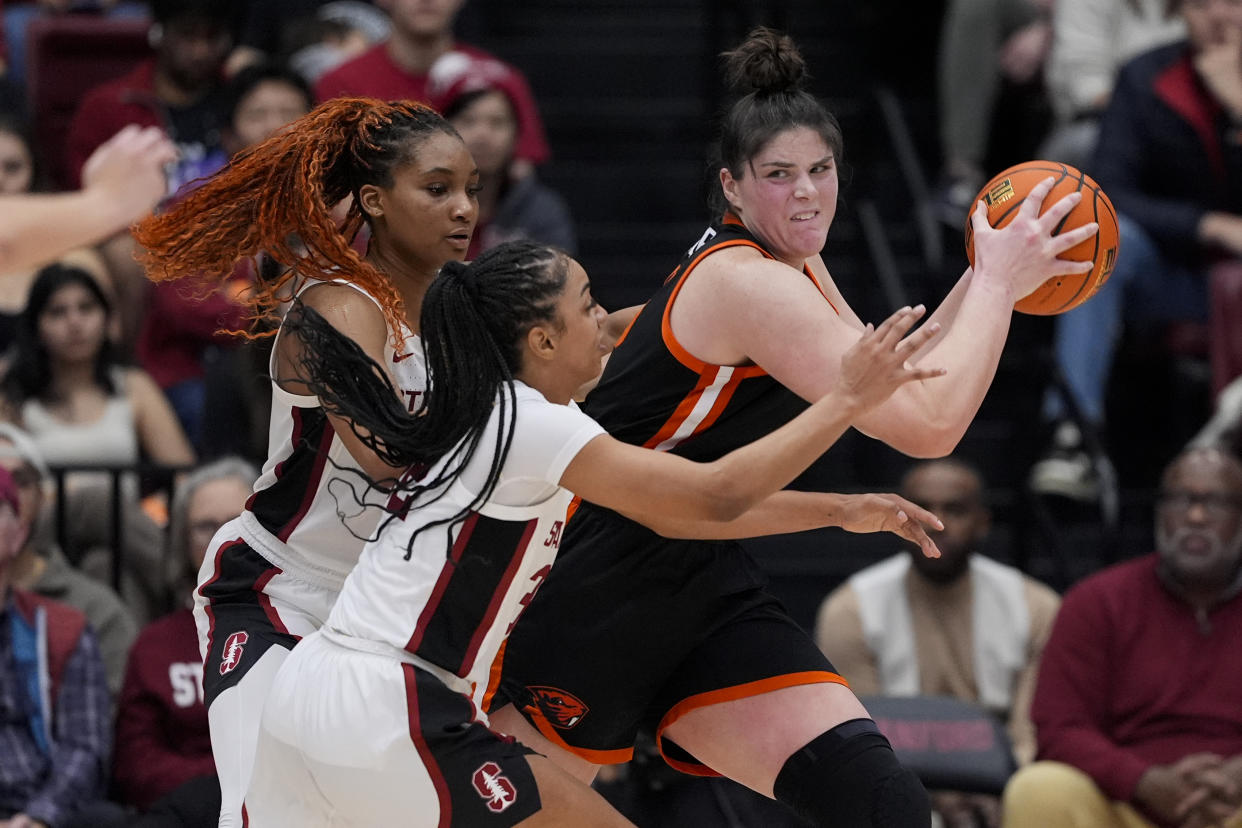Inside the formula of Oregon State’s surprising start

When the season began, the Pac-12 received a lot of hype. UCLA, Utah, Stanford, Colorado, USC and Washington State were all AP Top 25 teams in Week 1.
Not in the conversation: Oregon State.
The Beavers quickly changed that. After upsetting Utah and Colorado in late January, Oregon State is third in a stacked conference and ranked No. 17.
Now, the Beavers have rematches with the Utes and the Buffs just two weeks after facing them the first time. They are no longer flying under the radar.
No mistakes
Oregon State has lost just three games this season: to USC (56-54), UCLA (65-54) and Stanford (65-56). That consistency is because the Beavers don’t make a lot of mistakes. It’s hard to find a team that does almost everything right, but Oregon State is near the top of the NCAA in most statistical categories. Its ability to execute is what allows it to maximize its talent, even in situations where opponents may be better across the board.
Offensively, the Beavers are one of the league’s most efficient teams. They shoot 48.1% from the field, which is 12th in the NCAA. They also make 55.4% of their 2-point attempts and 36.3% of their 3-point attempts. Overall, Oregon State scores 0.94 points per possession, ranking 16th overall in the league.
That’s a lot of numbers to say this: Oregon State makes the most of its possessions. Rarely does a player force a bad shot, or carelessly throw the ball away. The team also isn’t afraid to share the ball, assisting on 68.1% of its baskets.
Defensively, Oregon State executes in a similar way. The Beavers don’t force a lot of turnovers — in fact they are last in all of college basketball with just 9.3 per game, but they make up for it in other ways. They are able to disrupt their opponents by cutting off passing lanes and forcing teams to score in isolation. Because of this, it’s difficult for teams to get in a rhythm, and the Beavers hold their opponents to just 9.6 assists per game.
For example, Colorado averages 19 assists, accounting for 65.1% of its offense. Against Oregon State, the Buffs had just seven assists.
Oregon State also holds its opponents to low shooting percentages. On average, teams shoot 37.4% from 2-point range and 27.8% from 3-point range. Take the 91-66 win over Utah for example. The Utes are shooting 58.8% from 2-point range and 37.7% from beyond the arc this season. Oregon State held them to 39.7% shooting from the field and 27.3% from 3-point range.
The Beavers aren’t flashy, but they execute in nearly every offensive and defensive category, which makes them hard to beat.
Raegan Beers and Talia von Oelhoffen
Every good team needs a player who can make a play when things get tough. Oregon State has two in Raegan Beers and Talia von Oelhoffen.
In 21 games this season, Beers has 13 double-doubles, putting her ahead of players like Angel Reese, Aaliyah Edwards and Kamilla Cardoso. The sophomore forward holds her own in the paint and serves as the team’s anchor offensively and defensively. She’s averaging 18.5 points and 11.2 rebounds per contest, while also serving as a catalyst for Oregon State’s efficient offense. Her 67% shooting from the field is the fourth-best mark in the country.
Von Oelhoffen offers Oregon State a consistent offensive threat at guard and is the team’s second-leading scorer at 10.6 points per game. But it’s her decision-making that really propels Oregon State. The junior leads her team in assists with 5.3 per game, while committing just 2.2 turnovers per contest. Von Oelhoffen is one of just 40 players across the NCAA with an assist-to-turnover ratio of 2.33 or better.
The power of depth
Another positive for Oregon State is the team’s impressive depth. After Beers and von Oelhoffen, the Beavers don’t have another double-digit scorer. What they do have, however, is seven players who score at least four points per game.
The Beavers consistently go 10 deep, with 11 players averaging more than 10 minutes a game. Coach Scott Rueck clearly trusts his entire roster, which means opponents are constantly met with fresh legs and an Oregon State squad that can play with a lot of energy.
